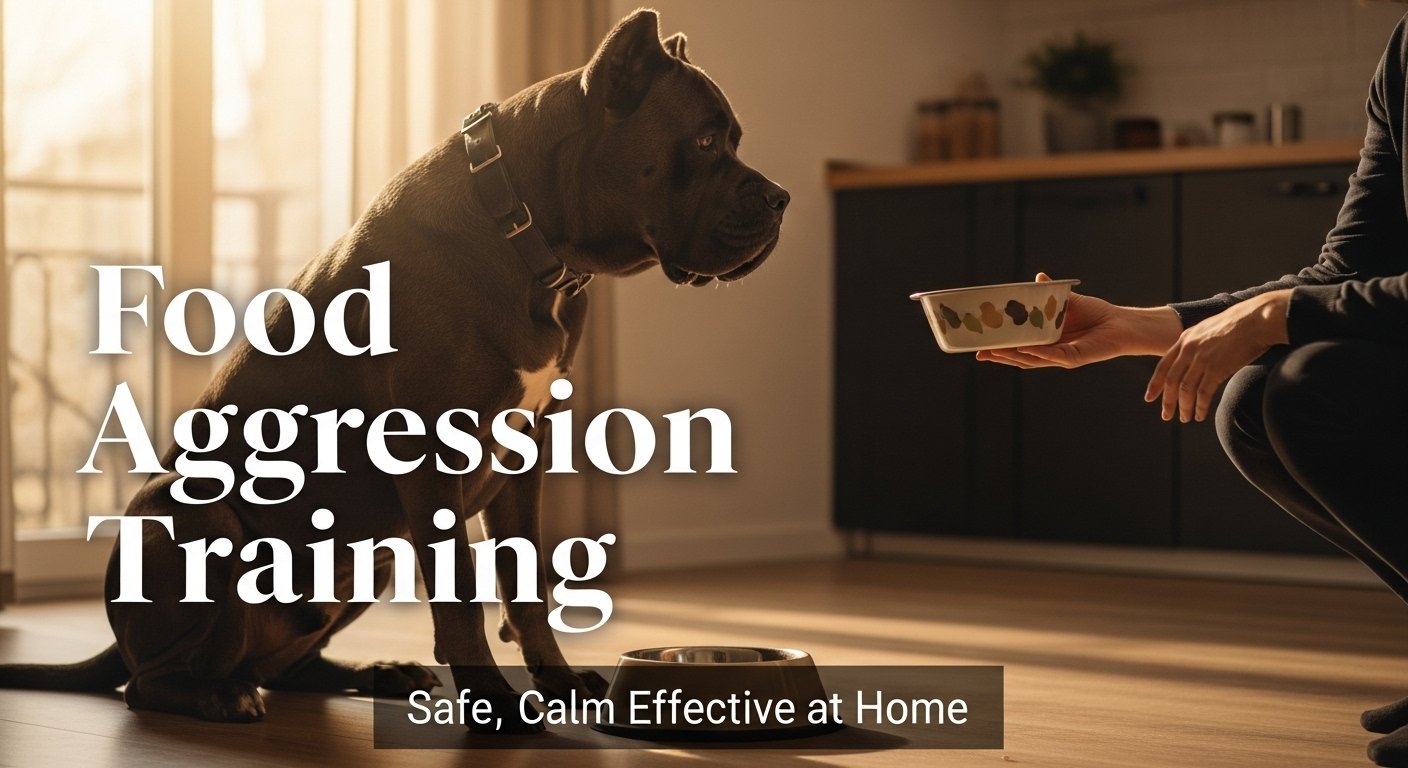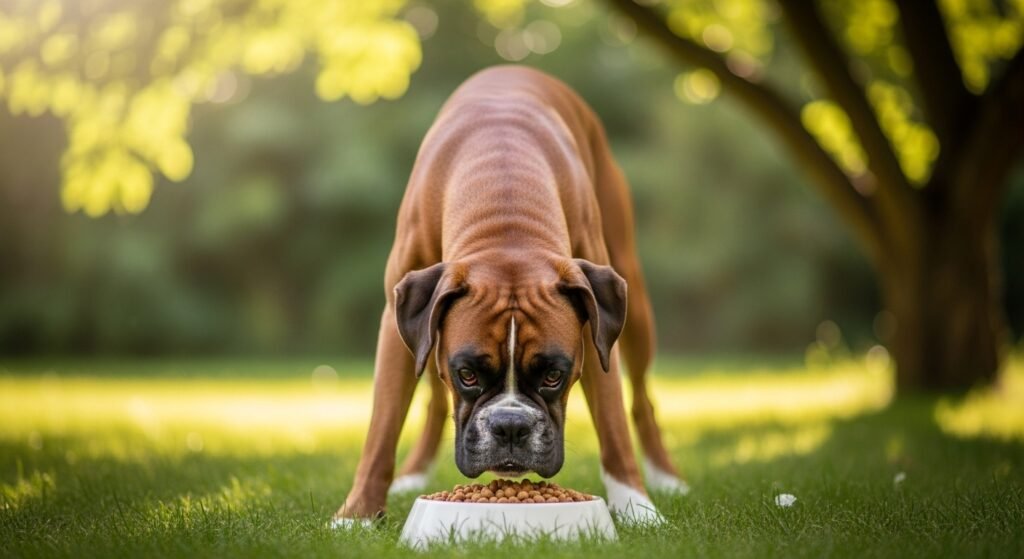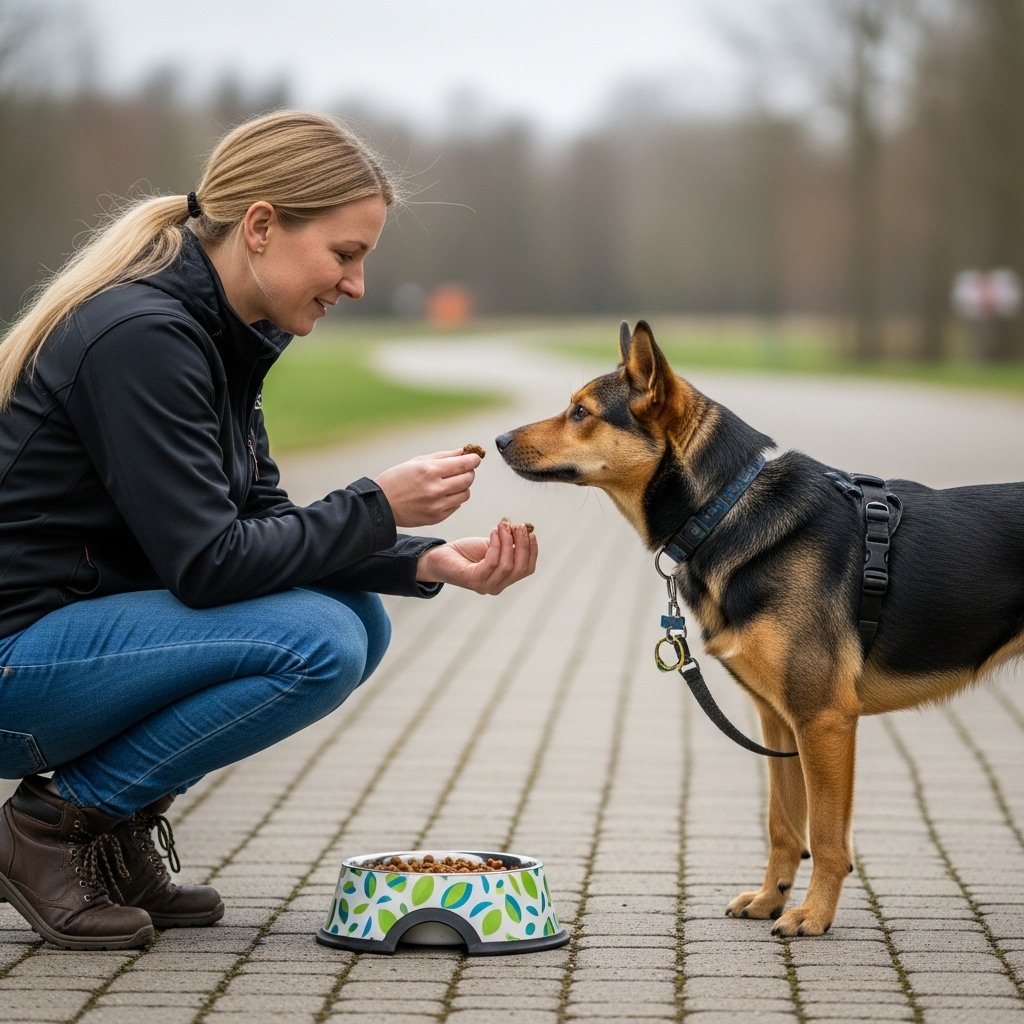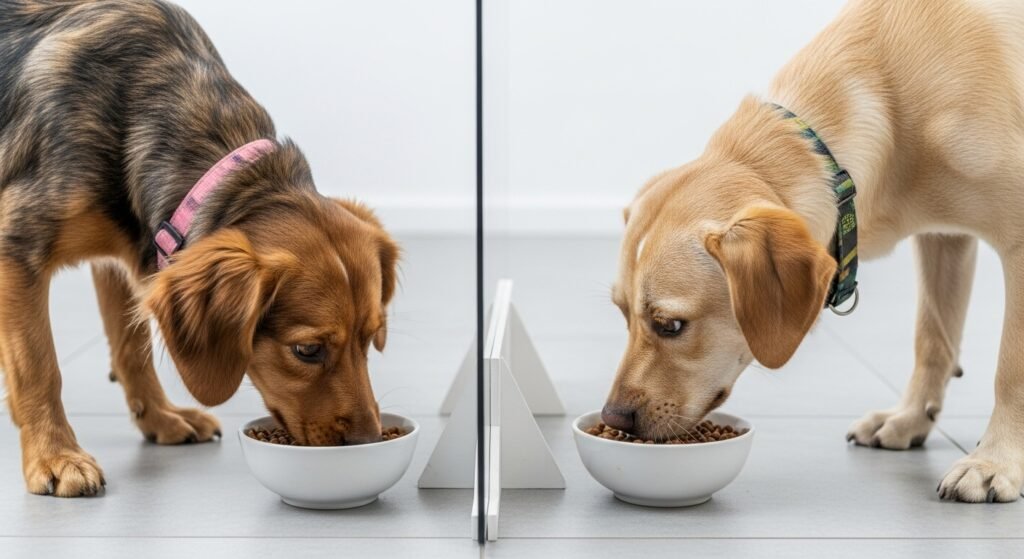
How to Stop Dog Food Aggression Safely at Home
You set down your dog’s bowl, and suddenly their body stiffens, a low growl rumbles, or they snap if you get too close. This behavior, known as food aggression (or resource guarding), is scary but common and the good news is, you can address it safely at home.
In this guide, we’ll explain why dogs develop food aggression, warning signs to watch for, and step-by-step solutions to make mealtimes calmer and safer for everyone.
What Is Dog Food Aggression?
Food aggression is when a dog becomes defensive, growls, snarls, or even bites to protect their food. It’s a type of resource guarding, where dogs feel they must defend valuable items like food, toys, or even their favorite spot on the couch.
Why It Happens:
- Survival instinct → In the wild, food is scarce. Guarding = survival.
- Past experiences → Rescue dogs may have lived with food scarcity.
- Anxiety → Stressful environments or unpredictable feeding schedules.
- Competition → Multi-dog households can trigger guarding.

Warning Signs of Food Aggression
Not all dogs snap right away look for subtle cues first:
- Stiff posture while eating
- Eating faster when approached
- Growling, snarling, or snapping
- Hovering protectively over the bowl
- Ears pinned back, whites of eyes showing
Recognizing early signs helps you intervene before aggression escalates.
Types of Food Aggression
- Mild: Growling or baring teeth
- Moderate: Lunging or snapping
- Severe: Biting when approached
Knowing the severity helps you choose safe strategies. If aggression is severe, consult a professional trainer or veterinary behaviorist.
Step-by-Step Solutions to Stop Food Aggression
- Rule Out Medical Causes
Pain or illness can worsen aggression. Get a vet check-up first.
- Establish a Calm Feeding Routine
- Feed at the same times daily.
- Choose a quiet, distraction-free spot.
- Keep mealtimes stress-free.
- Practice “Hand Feeding” (Carefully)
Start by offering food from your hand before placing the bowl down. This builds trust and associates you with food, not competition.

- Desensitization Training
- Begin by standing several feet away while your dog eats.
- Toss a high-value treat (like chicken) near the bowl.
- Gradually move closer over days/weeks while tossing treats.
- Goal: Your presence = good things, not threats.
- Teach “Trade-Up” Commands
Train your dog to give up food in exchange for something better:
- Offer a higher-value reward (treat, toy) when they release food.
- Practice outside mealtimes first.
- Separate Multi-Dog Meals
- Feed dogs in separate rooms or use barriers.
- Avoid competition over bowls.
Do’s & Don’ts of Managing Food Aggression
Do:
- Reward calm behavior around food
- Feed in consistent locations
- Use positive reinforcement
Don’t:
- Punish growling (it increases fear + aggression)
- Grab food bowls mid-meal
- Tease dogs with food as “training”
Long-Term Prevention Tips
- Structured feeding → No free-feeding; controlled mealtimes build security.
- Puppy training → Teach from an early age that humans near food = rewards.
- Enrichment feeding → Use puzzle bowls or slow feeders to reduce stress.
- Obedience basics → Commands like “leave it” and “wait” help manage impulses.

When to Seek Professional Help
If your dog’s aggression involves lunging or biting, work with a certified professional dog trainer (CPDT-KA) or veterinary behaviorist. Food aggression is manageable, but safety always comes first.
Final Thoughts
Food aggression can feel intimidating, but it’s not a hopeless situation. With patience, consistency, and positive training, most dogs can learn to relax during meals.
Remember: your dog isn’t being “bad” they’re acting out of instinct, fear, or insecurity. Your role is to replace fear with trust.
By creating a calm environment, practicing desensitization, and reinforcing positive behavior, you can turn stressful mealtimes into bonding moments with your pup.
Ready to Connect?
Enjoyed learning about big dog breeds? Join the Pets Fun Zone community — a growing space for U.S. pet lovers to:
Share photos, stories, and experiences
Ask questions and get advice
Discover recs for food, training, vet care, and more
Join us today at Pets Fun Zone and be part of a caring community of passionate dog lovers!
Let’s welcome all the gentle giants together.



